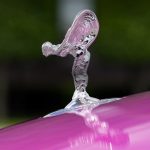Satellite images of faeces have led scientists to discover a new colony of Emperor penguins in Antarctic. The colony is home to 500 birds and is located at Verleger Point, in West Antarctica.
“This is an exciting discovery. The new satellite images of Antarctica’s coastline have enabled us to find many new colonies,” said lead researcher Dr Peter Fretwell.
Emperor penguins are the largest species of penguin and are the only one to bread on sea ice close to the coast. They breed during the Antarctic winter, typically between April and December, which makes them particularly vulnerable to climate change. “If the ice breaks up before that, the chicks fall into the water and drown or freeze,” said Dr. Fretwell.
The newly found colony via satellite mapping technology that spotted the penguins and their guano (penguin poo), brings the total number of known emperor penguin breeding sites around the coastline of the continent to 66, according to the British Antarctic Survey (BAS). Unfortunately not much can be done to mitigate the effects of global warming. “We can try and protect the foraging areas for penguins by banning fishing. But truthfully this is a global problem and it can’t be looked at on a local scale,” noted Dr. Fretwell.
“Last year we had the worst ever sea ice conditions in Antarctica and this year is even worse. We’re still working on what that means for the penguins, but it’s not good,” he added regarding the dramatic changes in sea ice in Antarctic.
If the climate continues to change at its current pace, most emperor penguins could become extinct by the end of this century, a study from Mongabay predicts.
Source: theguardian.com










